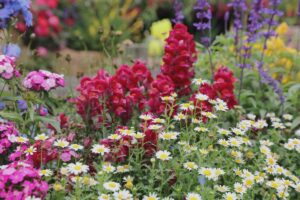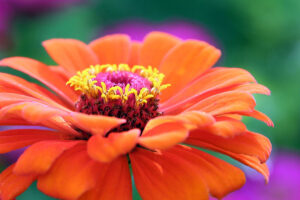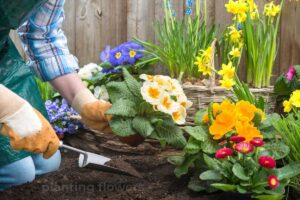This page may contain affiliate links. If you click and buy, we might get a small commission at no cost to you.
Florida has the perfect growing conditions for a variety of plant life, including weeds. The name of the state literally translate to “full of flowers,” but where flowers grow, so can weeds. Weeds are unwanted plants that invade lawns, gardens, and farmlands.
They can interfere with the growth of lawns, crops, or other plants. They also deplete the soil of valuable nutrients. Weeds fall into two categories: annual and perennial.
Annual weeds germinate from seeds each year, drop their seeds, and then die. Perennial weeds do not die and continue returning year after year. Some varieties of weeds can be both perennial and annual.
Below, we list 20 of some of the most common weeds of Florida.
20 Weeds in Florida
The weeds that grow in Florida are those that tolerate wet conditions, warm climates, and extreme weather. Follow along as we look at 20 of the most common weeds of Florida.
1. Crabgrass
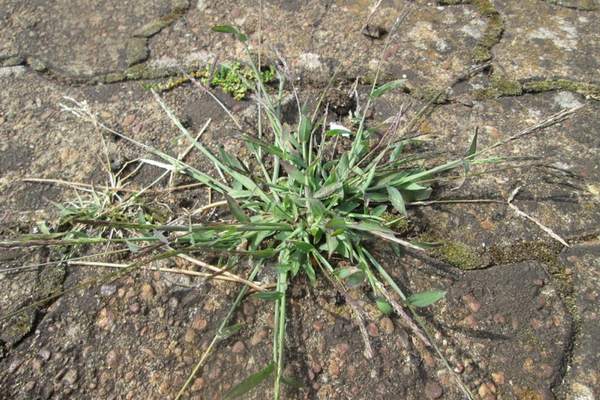
Crabgrass is one of the most common weeds in Florida. It’s an annual weed that has coarse leaves. It gets its name from the way the stems spread from the center resemble crab legs.
Crabgrass is a clumping weed. It spreads with thousands of seeds that can lay dormant in the ground before germinating.
2. Globe Sedge
Globe sedge is a perennial that typically grows in wet and sandy areas. Needless to say It thrives in the Florida wetlands. They grow in clumps and spread quickly because of their seed clusters.
Globe sedge has a globe of seeds at the end of its stem. They grow to be about 6 inches tall. They spread through seeds or rhizomes.
3. Dayflower
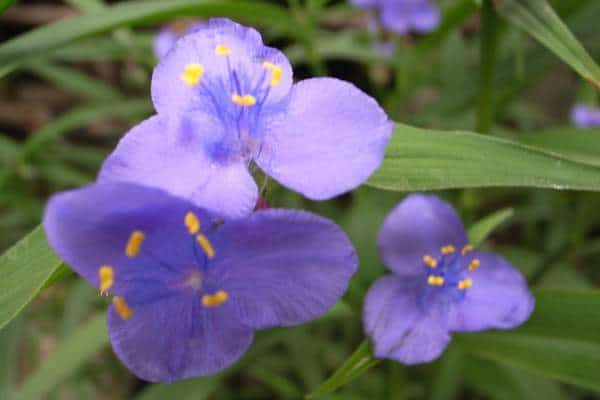
Dayflower can be both annual and perennial. It’s a tropical plant. The weed has blooms with blue or violet ear-shaped petals and a yellow center. Flowers are about the size of a quarter.
Dayflower blooms open in the morning. They will continue to bloom all day, giving them their name. However, they only bloom for one day.
4. Dandelion
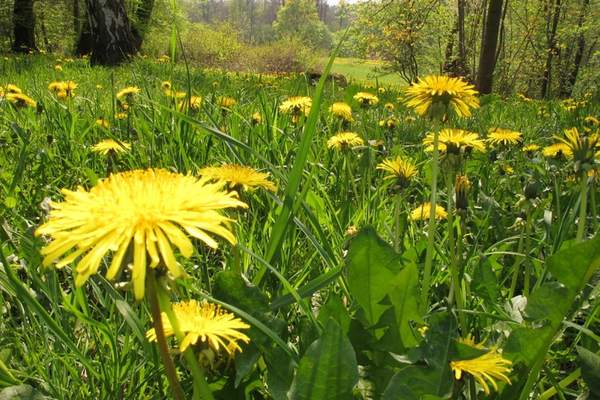
Dandelions are a common weed in Florida. They are recognizable by their tall stem and yellow flowers that turns into a white puff ball of seeds. Dandelions can grow up to 24 inches tall.
The seeds have tufts of feathery sails that carry them in the wind. Their seeds can spread for miles floating in the wind.
5. Dollarweed
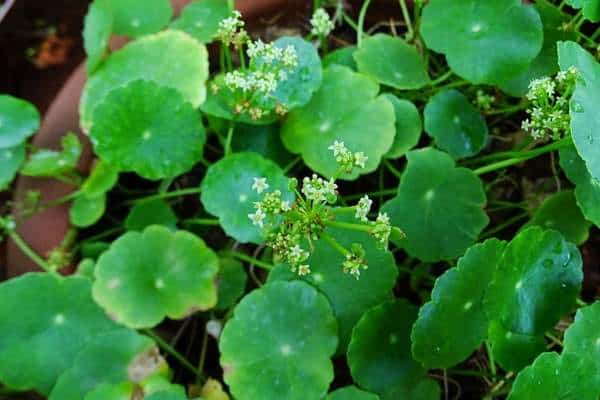
Dollarweed is a perennial weed found in wetlands and areas with a lot of water. It’s no surprise it’s found all over Florida.
Dollarweed leaves are round like a silver dollar. It has small, white, flowers in clusters at the ends of the stems They can reproduce through spreading rhizomes or seeds.
6. Nutsedge
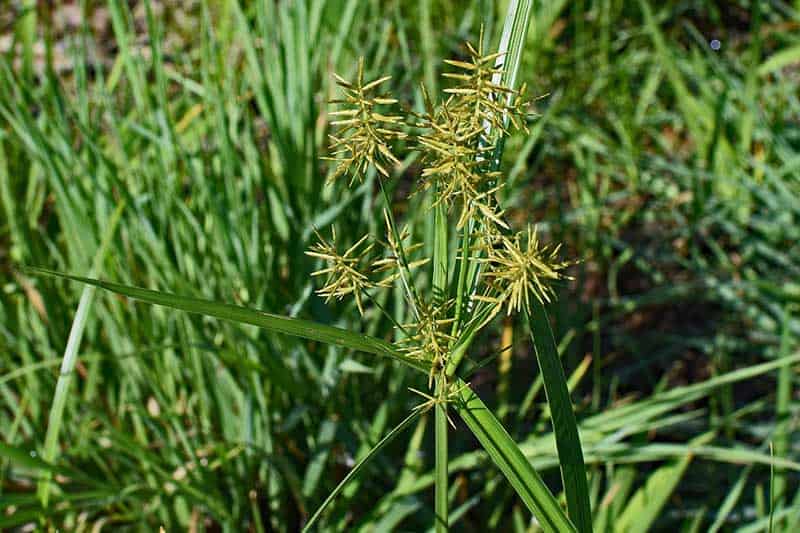
Nutsedgeis a fast-growing, perennial sedge that invades lawns and gardens. It is difficult to control because its seeds that can remain viable in the soil for up to five years.
Nutsedge also spreads rapidly by underground rhizomes. This weed can reach up to 3 feet in height. The waxy leaves are yellow-green.
7. Pusley
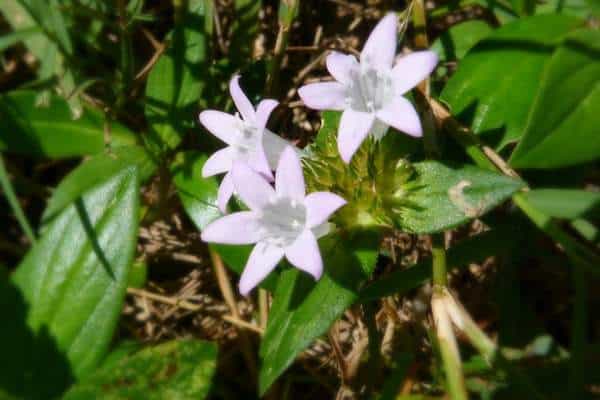
Pusley is found invading lawns across Florida. It’s an annual weed that grows in large clumps.
Pusley stems spread along the ground. It grows white flowers with six petals and it has hairy leaves. The deep green leaves are wide and come to a point
8. Hairy Bittercress
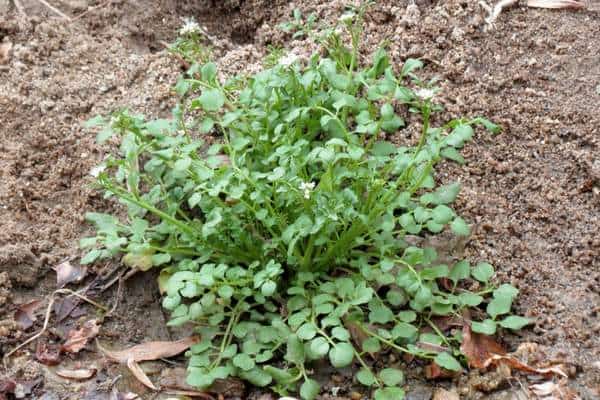
Hairy bittercress is a member of the mustard family. Its leaves grow low to the ground with stems that shoot up.
Bittercress has small white or yellow flowers at the top of their stem. They can be up to 12 inches tall. They can be annual or biennial, sprouting every two years.
9. Spotted Spurge
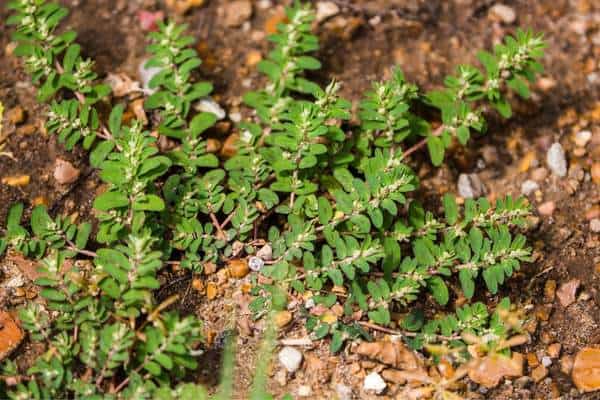
Spurge is an annual weed. It secretes a milky white sap when the stem is broken. They can grow 1 to 2 feet tall. Spurge has red or purple colored stems and leaves lines with the same color.
Spotted spurge is the most common variety found in Florida. It’s recognizable by its red spots on its leaves.
10. Dallisgrass
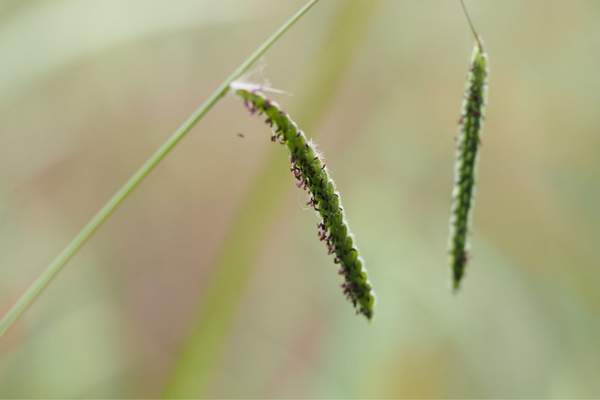
Dallisgrass is an invasive weed that is native to South America and brought to the US in the 1800s. Now it has spread throughout the US, including Florida.
This perennial weed grows in dense clumps that spread into mats. They spread with rhizomes, and clumps can expand outward over 3 feet. Once established, dallisgrass is difficult to get rid of.
11. Common Ragweed
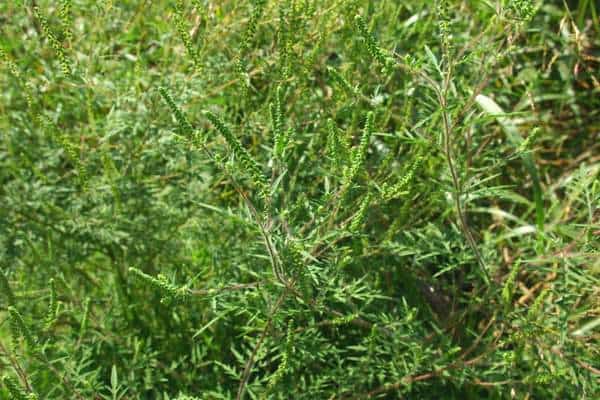
Common ragweed is a familiar plant to people with allergies. It can be annual or perennial depending on the variety.
Ragweed can grow several feet tall, sometimes up to 4 meters. They have white or purple flowers.
12. Creeping Woodsorrel

Creeping woodsorrel is also called Sleeping Beauty. It grows low to the ground and spreads through an above-ground network of stems called stolons.
Creeping woodsorrel can creep for hundreds even thousands of feet. It has small yellow flowers and clover leaves.
13. Chamberbitter
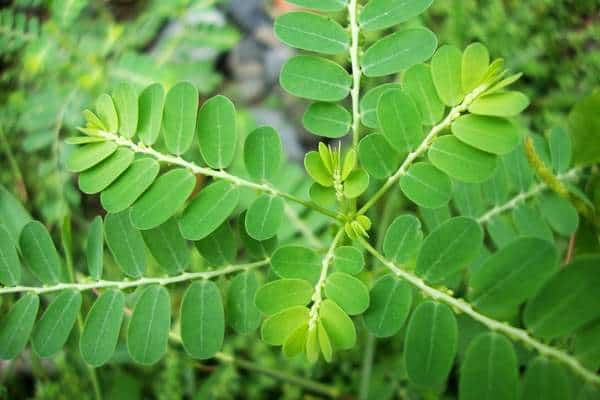
Chamberbitter is an annual weed also called gripe weed. The plant contains several compounds that have been shown to have medicinal properties.
The plant grows to a height of 24 inches and has small, yellow flowers. Chamberbitter is often found growing in disturbed areas, such as roadsides and fields.
14. Hurricane grass
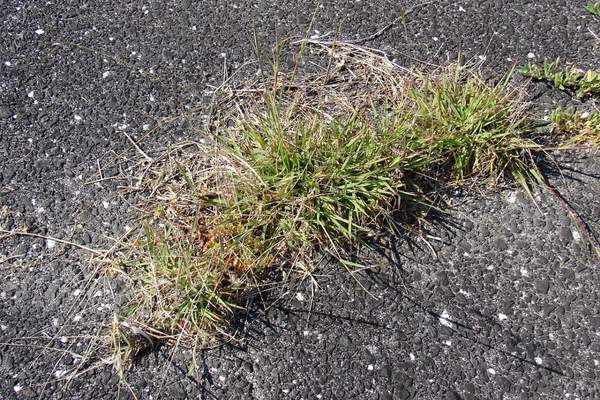
Hurricanegrass is a perennial weed most commonly found in coastal areas, but it can also be found inland. It is highly tolerant of salt, sand, and wind.
Hurricanegrass can grow to over 3 feet tall. It has bunches of spikelet seeds at the end of the stems.
15. Doveweed
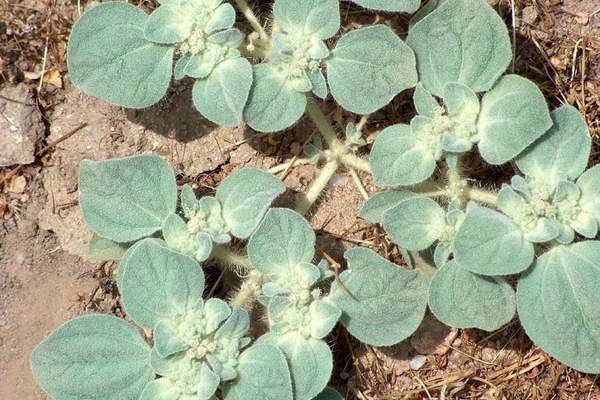
Doveweed that is highly invasive annual weed that grows close to the ground. It spreads through rhizomes and seeds, and it grows best in moist soil.
Doveweed has a tiny flowers that is light purple or lavender in color. Its leaves are about 4 inches long.
16. Black Medic
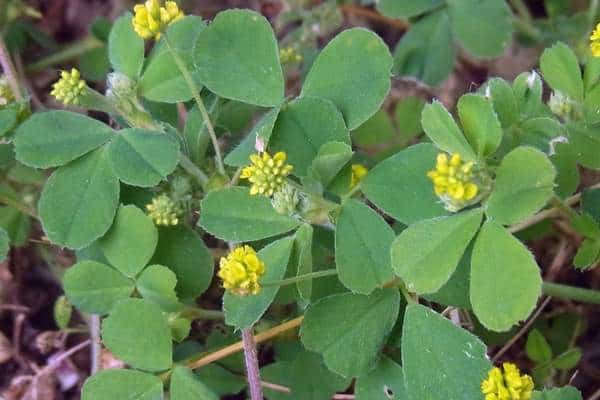
Black medic or medick is also called hop clover. It’s a member of the legume and clover family. This weed is tolerant of a variety of soil types and can even grow in poorly drained soils.
Black medic gets its name from its small black seeds. It has tiny yellow flowers, and stems can grow up to 30 inches.
17. Torpedograss
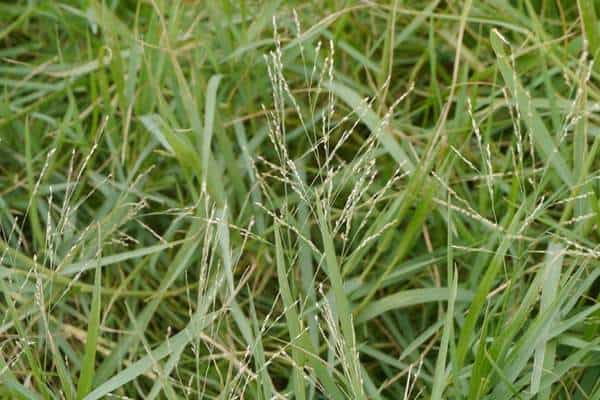
Torpedograss is named for its pointed shaped leaves that look like torpedos. This perennial weed can spread shoots up to 40 inches long.
Torpedograss is a creeping grass. It spreads easily and rapidly through seed spread if not controlled.
18. Goosegrass
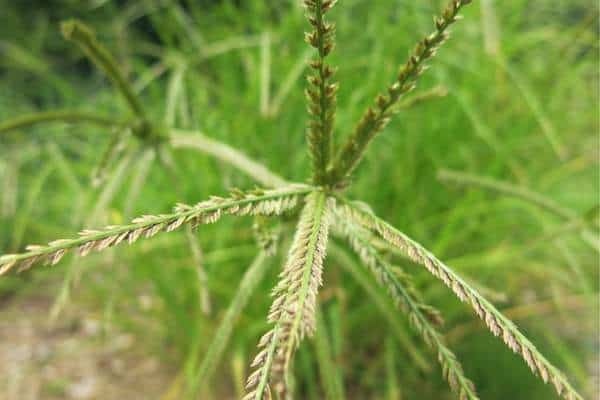
Goosegrass is also known as crowfootgrass. It has 3 to 5 seed heads that look like a crow’s foot.
Goosegrass thrives in warm, humid climates and is often found in Florida lawns during the summer months. It can grow well in high traffic areas where the soil is packed down.
19. Broadleaf Plantain
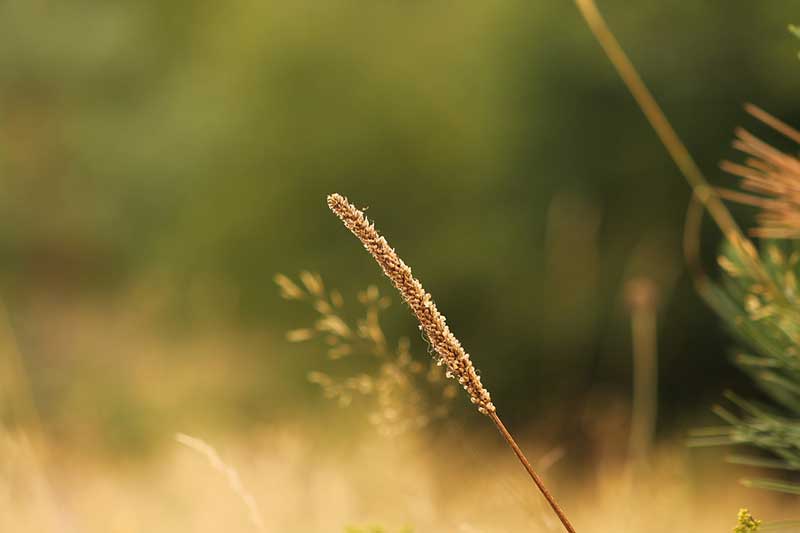
Broadleaf plantain is a very common weed in Florida yards and gardens. It is a low growing perennial that can form large colonies.
The leaves are large and oval shaped with very noticeable veins running through them. The flowers are small and white and grow in clusters at the base of the leaves.
20. Santa Maria Feverfew
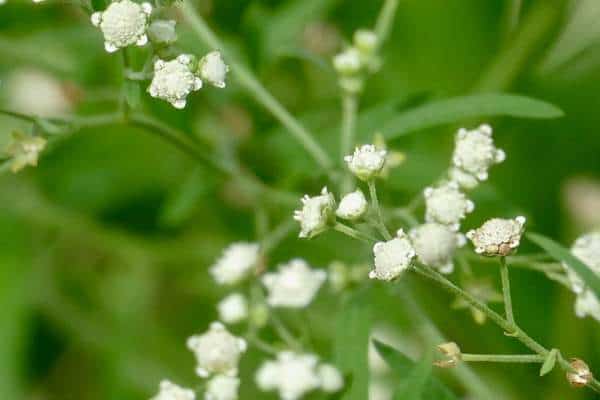
Santa Maria feverfew is found in tropical regions around the world. It is invasive to farmlands and lawns throughout southern Florida.
This is a toxic weed. It can cause skin irritation in humans and cattle. It can also cause respiratory problems.

